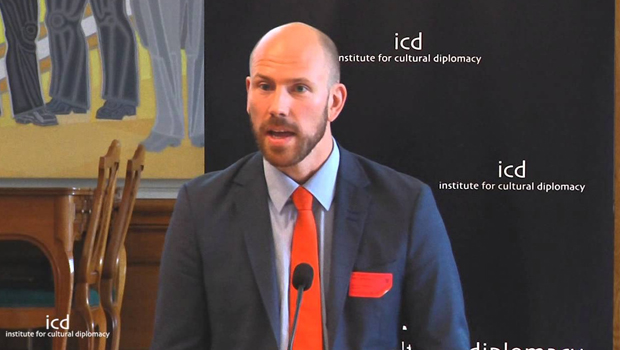Marcus Anderson
While we are currently working from out temporary office on the Whitsunday Islands, we present to you an interview with Marcus Anderson, Tendensor International’s CEO. The agency provides consultancy on place branding in the Nordic region including Sweden.
The veteran takes us into the insightful world of place marketing where unlike popular beliefs, the work is based more around policy, brand development, management and innovation rather than logos, one-liners, advertising, etc.
On some of the projects that he is currently working on, he says that a main development area is attracting and accommodating international talent. This involves not just the marketing aspect but actually providing with an environment that is conducive to foreigners to help them adapt and settle. Another major venture is with respect to attracting business in the region. There are 21 cities on board and the main idea is to find new ways to market investment. In addition to this, there are several other place branding projects going on in which they are strategizing.
Anderson comments on how he came across the term place branding a decade ago or so. At that time he had been employed by Baltic Development Forum shortly after having completed his studies. The forum was an international body that was working towards making the Baltic area known around the world.
To move further in the direction, the first thing they did was call the gurus who came up with the idea of place branding, Christer Asplund, Wally Olins, Simon Anholt and the like. Other invited guests included key people from different backgrounds. There were people from a business background, then civil servants, academicians, etc. All these people were called to have a dialogue on the practicality of the idea. In total there were around 50 people who were called to stay at Villa near Lake Como, Italy for a weekend. It was there and then that his fascination with place branding budded and has since only flourished.
He is also an IR and marketing major and when you combine the two, you have a better idea of what place branding is.
Anderson’s most proud and memorable moment in the current capacity is the publication of their handbook which focused on how you can attract talent in places. It became an instant hit not just locally but all over the world and fared way better than anticipated.
On being asked why the Nordic region+Sweden is more invested in place branding, he gave the argument that since these are mostly small countries located on the boundary, they also have to work harder to be recognized. Moreover, the region is dependent upon trade, tourism and investment foreign and local.
His personal favorite from the Nordic Place Brand Conference that was held in 2015 would be Start-Up Chile. According to him, it was not just about telling people but showing them the essence of the place as well through awe-inspiring illustrations.
Place branding in his view is the basic concept behind making a place appealing to everyone: those living there, tourists, investors, etc. This includes a frequent show of your strengths and character.
Anderson also believes that there is a difference in the way consultancies like theirs and government ministries approach the subject of place branding. While consultancies have liberty to delve into it as they want, ministries consider it as part of the communications department. They also think on a short term, unlike place branding consultancies that make strategies for the long term and as a permanent agenda. Moreover, the communications department also has limited powers where adorning an area is concerned.
He was further asked if according to him, there is any difference between place branding and nation branding. To this he replied that there are numerous differences, the key area where the difference lie being stakeholders. In nation branding, the major cultural institutes play a pivotal role. Foreign representation is also required. Moreover, a better understanding of the cultural norms and the “meta-values” is required at a national scale. Different perspectives need to be understood. Place branding on the other hand can be done by primping up the place only.
Anderson’s favorite book on the topic of place branding is Places by none other than Simon Anholt. He has read the book more than once and it helps him reinstate the idea that place branding is more than a marketing gimmick. It is rather an ideology that focuses on policy, identity and development. He believes that the most common challenge faced by place branding is involving stakeholders and making them co-creators of the strategy or platform.
He says that the main challenge as far as inter-regional place branding is concerned has been bringing all stakeholders such as the government agencies and the private agencies that work towards tourist development and investment to join hands in the Baltics. Although there was mutual consent regarding the various benefits of such a strategy, there is little action if any taken in this regard. The centre where opportunity lies is in distant lands. North America and East Asia is the hub where collaboration on the marketing front should really bear fruit considering the lack of knowledge countries in these areas have about others.
Anderson avidly follows LinkedIn groups on place branding and also follows hashtags related to the subject on Twitter. He reads Monocle Magazine too.






















































